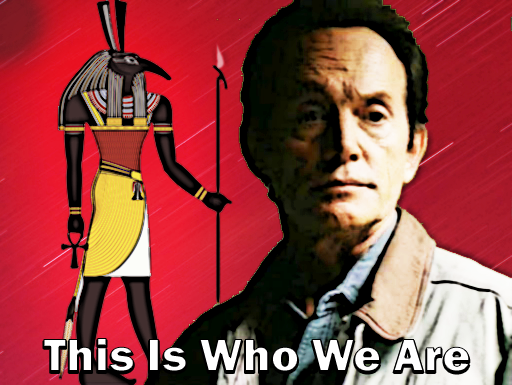How my favorite TV show—a 1990s police procedural with apocalyptic overtones—influenced my walk with Set.
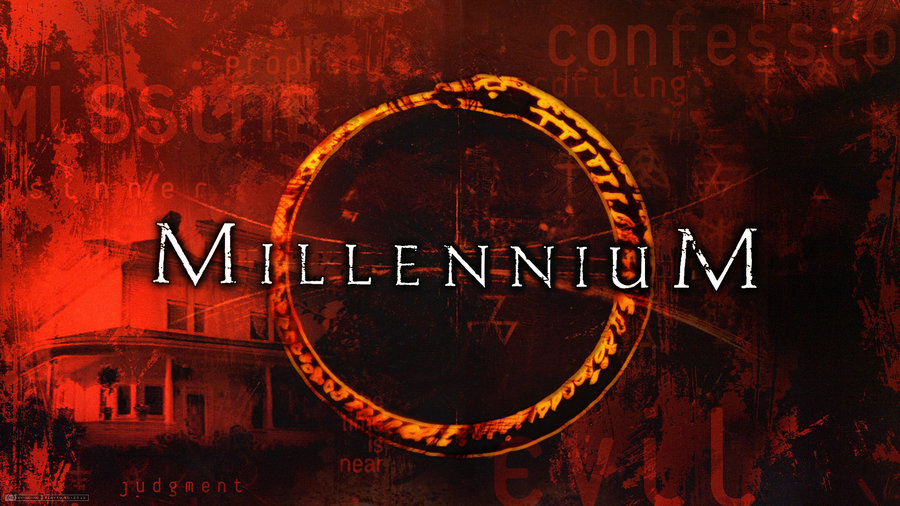
Millennium is one of my favorite TV shows ever made. It was created by Chris Carter, who also created The X-Files, and certain characters have appeared in both shows. But Millennium is no mere “X–Files spin-off”; it features a completely different cast of characters dealing with entirely different problems. While Special Agents Fox Mulder and Dana Scully track down weird monsters and alien conspiracies, retired FBI profiler Frank Black (played by genre favorite, Lance Henriksen) gets sucked back out of retirement to track down some of the most evil human beings imaginable. This is because Frank has a preternatural knack at seeing into the mind of every rapist, serial killer, or terrorist he targets his attention on. He can read about a murder in the paper and start getting random flashes of whatever the perpetrator is thinking and feeling. Much of this is due to Frank just being really good at his former job; yet he also clearly has “the second sight,” even catching glimpses of ghosts, angels, and demons from time to time. And as much as he wants to stay home with his wife and daughter and pretend “the bad men” aren’t really out there, Frank just can’t help himself; he’s driven to track down every evil thing he can pick up on his psychic radar, no matter what.
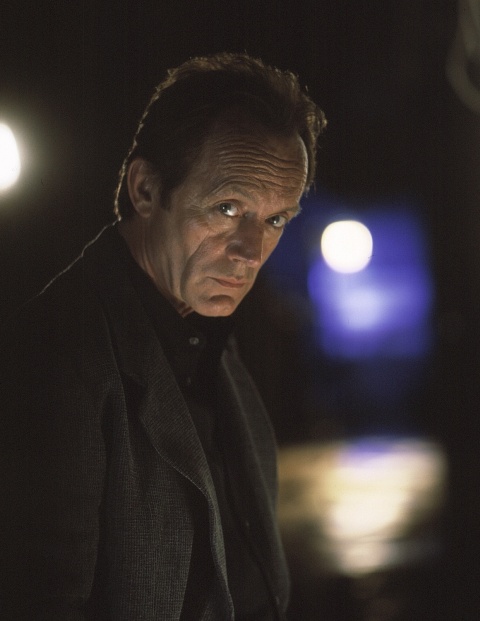
Frank is approached by a private investigation firm called the Millennium Group, which consists of various ex-law enforcement personnel who’ve drawn some terrifying conclusions from all the horrific cases they’ve worked. For them, evil isn’t just a human ethical failing; it’s a real supernatural force that actively seeks to destroy our world (and which gets closer to achieving this goal every day). Every single rape or murder that happens is really a part of this gigantic plot, whether the human perpetrators fully understand what they’re doing or not. The Millennium Group also worries that the world might actually end in the year 2000, or perhaps not too long afterwards. Even though many members are deeply religious Christians who look forward to an eventual Second Coming, they nevertheless believe we can’t just sit back and “hope for a happy ending.” If something isn’t done about the state of things right fucking now, there may not be any human civilization left for Jesus to save when he comes back. So the Group uses a wide variety of resources to apprehend the human monsters that live among us, trying to save the world one case at a time. These resources include everything from all the best forensic science units to vast libraries of astrological, theological, and magical texts. And the Millennium Group is especially interested in Frank Black since he’s not only a total wizard at criminal profiling, but apparently an actual seer or oracle of sorts as well.
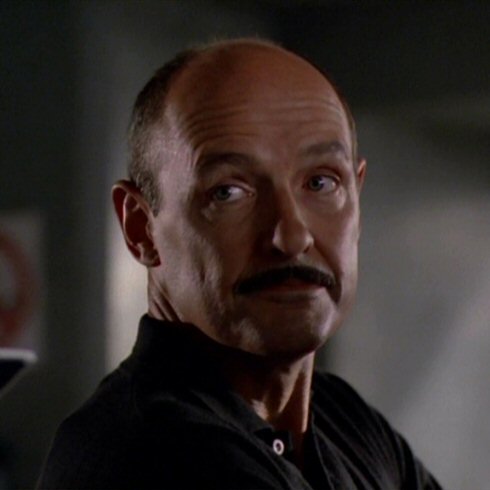
This show was inspired by many of the apocalyptic fears that ran rampant toward the end of the 1990s. (Does anyone else remember the Y2K scare?). This leads some people to think its subject matter is no longer relevant today. Let me just say, I beg to fucking differ. If there is one horrible truth that Millennium taps into, it’s the fact that people will always have apocalyptic fears that drive them to do terrible things. Even more terrifying, certain people actually want the world to end and will do everything they can to ensure that it does. This is every bit as true today in 2020 as it was back in 1996, and I would go so far as to say that Millennium is actually far more frightening and disturbing now than it was back then. I always found it much scarier than The X-Files because it was willing to take so many more risks. This is a show in which literally anyone can die at any time, and the fact that it lasted for three seasons (in the era of more popular shows like Angel and Buffy the Vampire Slayer) is nothing short of amazing.
In the very first episode, Frank picks up his newspaper and learns that a local stripper has been horribly butchered. He then starts having visions of how (and, more importantly, why) this happened. That’s when Frank realizes he can’t just stay home and be with his family; he has to go back to work. (And the look that crosses Lance Henriksen’s face at that pivotal moment always makes me tear up and cry a little). So he approaches some old pals in the Seattle PD and offers to help them investigate the case. They eventually catch the killer, who thinks he’s the Messiah and is “passing judgment” on people by doing things to them that would have made Josef Mengele proud. But not before we see two of the most disturbing things that were ever shown on TV in the 1990s. First, Frank’s gift allows us to see just how Mr. Serial Killer sees the world, and it might as well be called “Hellraiser in the Park.” Then we get a scene where Frank and the cops uncover a man who’s been buried alive…and whose bodily orifices have all been stitched shut. They don’t just refer to this stuff off-camera, either; they fucking show it to us, clear as you please. That might not seem too impressive in today’s post-CSI world of gory police procedurals; but this was in 1996, and nothing like that had ever been seen on prime-time network TV before. Not even Law & Order or NYPD Blue went that far at the time, and this was all in the very first episode of Millennium, to boot! It scared me to death when it first aired back in October 1996, and it still gives me the shivers today.

The three seasons of Millennium are drastically different from each other, as well. Apart from Frank Black’s psychic gift, there is almost nothing of the supernatural to be seen in the first season at all; the show is mostly just a police procedural at first, with our heroes chasing a different serial killer or terrorist each week. But as the season progresses, more explicitly supernatural things begin to happen. I will never forget the episode, “Lamentations,” in which Frank and the Millennium Group realize the killer they’re chasing is really a shapeshifting demon. The episode “Maranatha” is also terrific, featuring a Russian dignitary and mob boss who might actually be the Antichrist. These episodes were so brilliantly written, they completely caught audiences off guard at the time. Here we were, thinking this was just a police procedural with entirely human antagonists to be defeated; and then all of a sudden Chris Carter changes the rules on us and turns things up to 11. I remember being scared shitless by the scene in “Lamentations” when “Lucy Butler” walks down the staircase, showing us her real face between lightning strikes.

The second season of Millennium is my personal favorite; we get into some really crazy stuff here. Frank’s psychic powers become much stronger, he becomes more involved in the Millennium Group’s internal affairs, and he meets a lady named Lara Means (played by Kristen Cloke) who can see angels. (Whenever she sees the angels, it means something real fucked up is about to happen.) Frank also learns the Millennium Group consists of different factions that are bitterly opposed to each other, and that some high-level members are every bit as evil as all the serial killers and terrorists they help to catch. This leads to some truly remarkable stuff, including a civil war within the Millennium Group, a battle against Nazis for the Cross of the Crucifixion, and even the outbreak of a deadly supervirus! In some ways, Millennium Season Two almost feels like a totally different show; but the changes all worked, and every Millennium fan I know considers this era of the series to have been the very best.

Unfortunately things did not turn out quite so well for Millennium Season Three. I remember waiting patiently through the entire summer of 1998 to see how Frank and his daughter Jordan (played by Brittany Tiplady) were going to escape a plague-infested Seattle. But when Season 3 begins, Frank and Jordan are suddenly living in Virginia with Jordan’s grandparents. We are told the outbreak in Seattle “wasn’t actually as bad as it seemed,” and nobody but Frank even seems to remember that it happened. Meanwhile, Frank teams up with FBI Special Agent Emma Hollis (played by Klea Scott) to try and bring down the Millennium Group, which has become completely evil. Peter Watts (played by Terry O’Quinn), who was Frank’s sidekick in Seasons One and Two, is now re-cast as Frank’s arch-nemesis. None of this has anything to do with where Millennium appeared to be going in Season 2, and it alienated most of the fan base pretty badly. Plus, most of the stories in Season 3 make no fucking sense at all; they are more like rejected X-Files episodes that are just weird for weirdness’ sake. It took me several years to finally watch the entire season all the way through, and I have zero interest in ever trying to doing so again. It felt like Chris Carter lost his marbles and decided to just give all of us Millennium fans the finger.
To add insult to injury, Carter included Frank Black as a guest character in an episode of X-Files after Millennium was canceled in 1999. In this episode (rather creatively titled “Millennium”), Frank is living in a psych ward when Mulder and Scully come to ask him some questions about the Millennium Group. This leads to a so-called “final confrontation” between Frank and the Group at a cabin in the woods, where the last remaining Group members have been turned into zombies. I for one do not know what the fuck Chris Carter was thinking when he wrote all of this. During Millennium‘s three-year run, viewers learned the Group is up to all kinds of crazy shit, including biological warfare. But according to The X-Files, the Millennium Group is really just a handful of zombies locked up in a basement. What the FUCK? To say that Millennium fans were disappointed by this is an understatement.
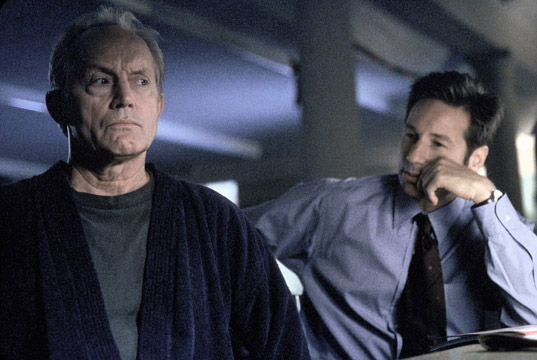
In Egyptian cosmology, our universe is sustained and held together by Ma’at, which is both a principle and a Goddess. As a principle, it essentially represents helping others to help yourself, both in this life and in Duat (the Otherworld). The ancient Egyptians believed Ma’at is always endangered by the forces of isfet, which are led by the Chaos Serpent. Should Ma’at ever be completely dismantled, the entire cosmos would cease to exist. The “apocalypse” was not a “future” event that had yet to occur, but an ever-present threat that could happen at any possible moment. And the Egyptians believed it was really everyone’s responsibility to help prevent this from happening. The key to upholding Ma’at and fighting isfet was to be a good neighbor and citizen, treating others as you yourself wished to be treated. In this way, every human ethical decision has some part to play in the never-ending war between the Netjeru and Apep, no matter how small or insignificant such decisions might seem.
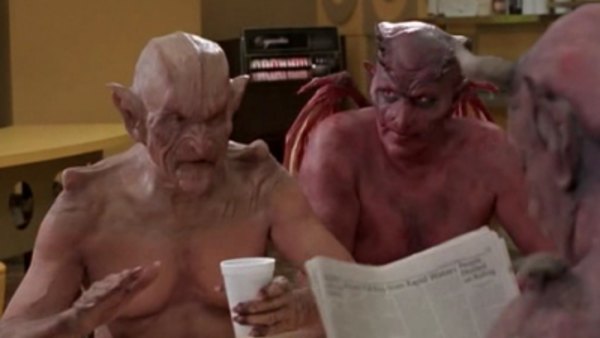
Millennium really speaks to me on this level. Though it is mostly inspired by Christian themes, the idea of the Millennium Group trying to save the world one case at a time struck me as being more of a Kemetic concept. It was especially meaningful to me that Season 2 aired during my freshman year of high school, which was my very first year of walking with Set. My first weekend Sabbats were spent watching Millennium with Big Red and wondering how I could grow up to become just like Frank Black. I even considered studying to become a criminal profiler myself at one point, if you can believe it. (But then I came to my senses and remembered I struggle with depression enough as it is; so investigating murders and such is probably the last thing I should be doing). If there is any particular character from popular culture who has shaped my concept of “What it means to be a Setian,” it is most definitely Frank Black, who taught me that even the smallest acts of human kindness can be major victories for Ma’at!
